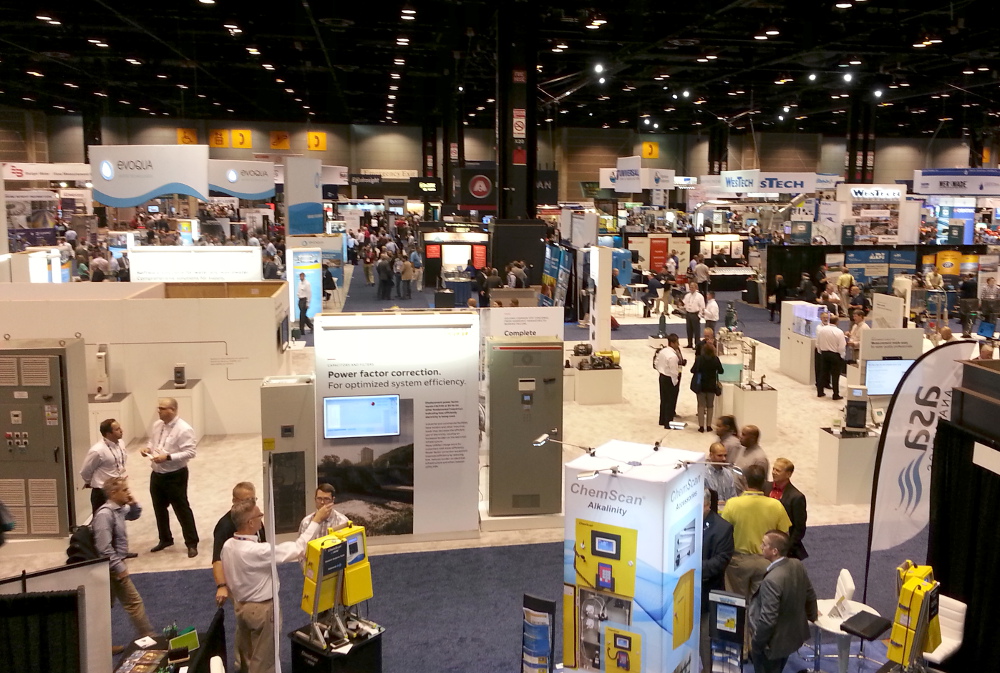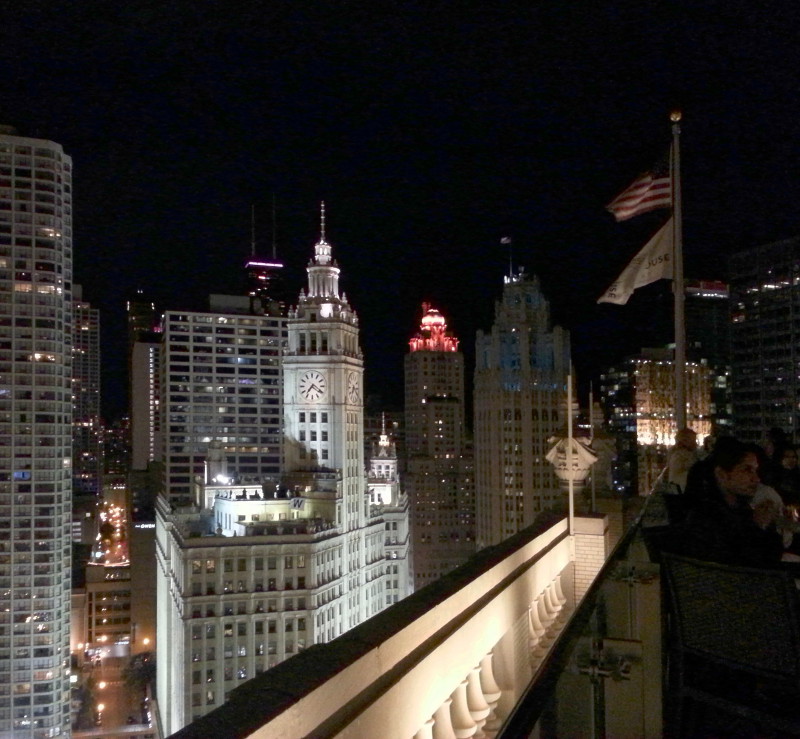WEFTEC 2017
At the start of the month, as I mentioned a couple of weeks ago, I attended a big wastewater conference in Chicago.
Note: everything on this blog is solely my own view and is written in my own capacity.
I was one of over 22,000 people to attend WEFTEC this year; it was my third time at this conference and tradeshow. After arriving and getting set up on Sunday, some coworkers and I went to the Gospel Brunch at the Chicago House of Blues. The next three days were non-stop: talking to people at our booth and perusing the tradeshow floor, attending some technical presentations, and going to networking events in the evening. On Thursday, we had another day of meetings in the lovely town of Geneva outside of Chicago (I started the day with a short 15-min jog along the Fox River). It was a privilege to be able to go.
Before I get into some notes on the technical sessions and other observations, I'll share a couple of photos to hopefully give a sense of what it was like to be there.
This photo only shows a portion (I'd guess around 10%) of the tradeshow floor, to convey the scale of the WEFTEC conference:

The photo, taken from a rooftop lounge, looks across the Chicago River at the Wrigley Building and the Tribune Tower. The architecture in that city truly is impressive:

A couple of the technical sessions I went to were 202 ("Optimizing the Nutrient-Resource-Energy Nexus in a Carbon and Energy Constrained World") and 601 ("Application of Advanced Biological Treatment Processes to Challenging Industrial Wastewaters"). The former session was focused on research that is still distant from the application stage (as far as I could tell), while the latter session featured case studies of completed projects.
Here are some very concise summaries of some of the presentations I saw in Session 202:
- One presentation suggested a possible mechanism for why digested waste sludge from systems with enhanced biological phosphorus removal has lower dewaterability: the phosphate released in anaerobic digestion ties up divalent cations (i.e. calcium and magnesium) that would normally perform a bridging function yielding tighter flocs that hold less water.
- Apparently some phosphorus accumulating organisms (PAOs) are capable of denitrification, raising the possibility of avoiding competition between those processes.
- A possible approach for recovering phosphorus when it's been removed from wastewater by chemical precipitation is to re-solubilize it from the sludge with carbonic acid.
- Volatile fatty acids (VFAs) produced under anaerobic conditions (basically using fermentation instead of complete anaerobic digestion to produce biogas) can be used as a carbon source to drive nutrient removal processes on-site at a WWTP or they could even be taken as a chemical feedstock for off-site applications; varying the pH and HRT can influence the speciation of VFAs produced.
As I mentioned, the research in this session did not seem like it was close to commercial viability.
I only had time to see a couple of presentations in session 601, but they were both really well done (disclosure: one of them was given by a co-worker about a project by our company, so I'm probably a bit biased):
- One was a case study of wastewater treatment for a feed ingredient manufacturer in Ontario. The high nitrogen concentrations (TKN = 1900 mg/L) had to be reduced to relatively low levels (10 mg/L NH3-N and 30 mg/L NO3-N) and also posed some concerns about inhibition of biological activity (by free ammonia or nitrous acid). The presentation covered the full project process from bench scale testing and modelling in GPS-X software, to the implementation of the full-scale treatment system (a Bardenpho MBR).
- The one my co-worker presented was about low-rate anaerobic treatment of pulp and paper wastewater. The biogas from this project is scrubbed of H2S with a biological system then used to generate up to 6 MW of electricity.
Aside from the presentations I saw at the conference, there were several that I didn't have time to attend, but for which I looked up the papers in the proceedings. There are a couple of them that used a biochemical methane potential (BMP) assay. I'm very familiar with applying this assay, so I had a few critiques of how it was presented in those papers:
- One of them had one table that showed the theoretical methane yield per unit mass of various substrates, and another table that showed the measured biogas (total biogas, not just methane) produced per unit of COD (chemical oxygen demand). Everything should have been normalized to the same basis to facilitate comparison.
- In the same paper, it wasn't clear if they included any sludge blanks (to see the amount of biogas produced in the absence of a substrate), standards/controls, or duplicates or replicates.
- Another paper did include blank-correction and triplicate samples, but still only added substrate to the serum bottles a single time. I think it is preferable to repeat feedings since the biomass may respond more readily to a substrate it has encountered before.
Because of the broad scope of the show (from the stormwater presentation track, to operator challenge events, to university research presentations, to an industrial wastewater mixer) there is something for everyone—everyone who works in the field of wastewater—which means everyone will have a different perspective looking back at the conference. Here are someone else's (who I've never met) notes on WEFTEC 2017.
A final item that I will discuss is that it's clear at a conference like this that a lot of highly talented professionals in the wastewater treatment industry are getting close to retirement. There will be some big shoes for younger professionals like myself to fill; the breadth of experience that some of these older guys have is irreplaceable in my view.
If you enjoyed this post, here are some other things I've written this year that are related to what I do professionally:
- Research on MBR costs
- The Water-Energy-Food Nexus
- The Deffeyes diagram
- A review of Quantified
- A business trip to Brazil